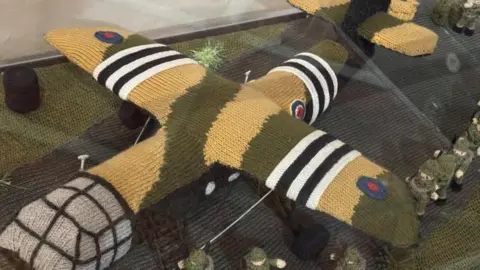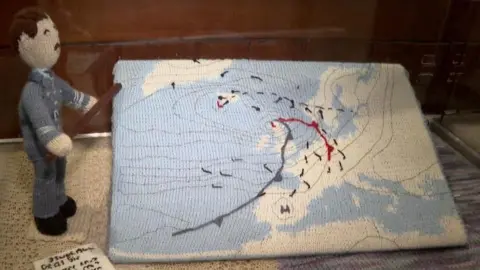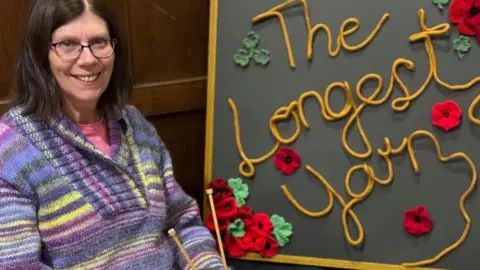RAF bombers, beach raids and balls of wool have come together for a “crazy” D-Day exhibition dreamed up by a woman born in Northern Ireland and painstakingly brought to life by an army of knitters from around the world. .
The Longest Yarn, on display in St Macartin’s Cathedral, Enniskillen, features 80 scenes detailing the build-up and battles of the 1944 Normandy campaign.
The project is the brainchild of Tansy Forster, originally from Magherafelt, Co Londonderry, who now lives in Normandy, France.
He said The Longest Yarn was a “far-fetched concept” to commemorate the 80th anniversary of D-Day.
“It started out as a decoration for my garden gate and I’m afraid I got a little carried away,” he explained.
She was inspired to mount the exhibition in Normandy, where, by chance, it was seen by a member of a group of Enniskillen artisans, St Macartin’s knitting group, The Knitwits.
Claire Holmes said she was “amazed and fascinated” by the project, prompting her to invite Mrs Foster and her creation to the city.
“I thought it was wonderful, so it’s great to be able to welcome him here,” he said.
One of The Longest Yarn’s exhibits, which will be on display until February 8, shows the weather report provided by Maureen Sweeney from the Blacksod Lighthouse in County Mayo, which postponed the Allied invasion for 24 hours.
Another scene shows a plane towing a glider towards the Pegasus Bridge, a role played by Enniskillen veteran Bill Eames, who died in 2020.

The displays were made by weavers from the United Kingdom, Ireland, the United States, Australia, New Zealand, Canada and France.
Mrs Forster believes knitted and crocheted figures have captured the imagination “because they are different and because people can identify with them”.
“It’s made with our own hands, and it’s taken a while and there’s thought and love in it.”

Enniskillen weavers have created a panel at the entrance to the exhibition and are taking part in Longest Yarn’s next project, Britain at Struggle.
They will do a scene showing American troops arriving in Northern Ireland to prepare for the invasion.
Some of the people involved in the D-Day project have traveled to Enniskillen.

Jean Wooden, who lives in County Cork, said she was drawn to the project after seeing a post on Facebook.
Although she likes to sew and make clothes, she hadn’t knitted or crocheted much.
“But now it is,” he declared.
Wooden built a field hospital near the Utah Seashore, complete with an ambulance, tents, and wounded soldiers.
To make the scene as historically accurate as possible, he looked at photographs and conducted extensive research.
Wooden says it’s “brilliant” to be part of something important.
“I would love for children to be attracted to this and discover a little of what happened in the past so as not to forget all the boys who gave their lives and were so brave.”
Jo Groves, from Cornwall, made a scene showing the first liberated town, showing a church and local people greeting the soldiers.
She said it took her and a friend more than 300 hours of hard work to achieve it.
“It was worth paying tribute to the veterans, we don’t want to lose this part of our history,” he added.






